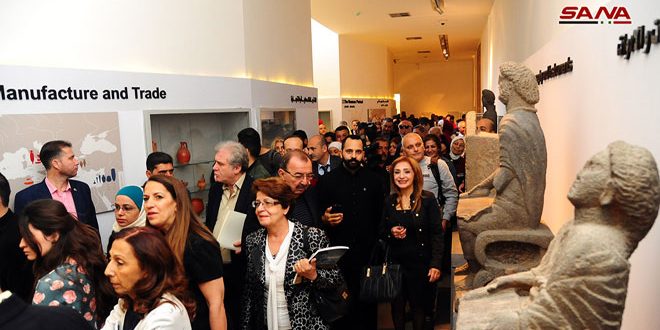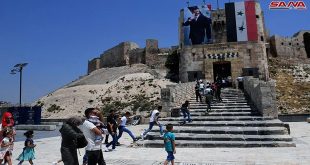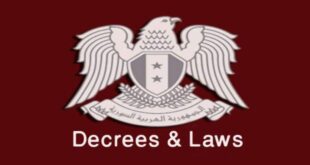Damascus, SANA –Damascus National Museum, located at heart of the Capital, reopened on Sunday for visitors, archeologists and researchers after a seven-year closure in a festivity that reflects the recovery of life to the war-weary country.
The famed Museum- considered the oldest and most important institution of its kind in the Middle East- was founded in 1920 and its current building was constructed in 1936, with wings being added in 1956 and 1975.
Foreign and Arab researchers consider that Damascus National Museum, whose facade was built from the front of an Islamic palace and restored as its main entrance, is an important world cultural, historical and documentary reference.
The Museum’s unique findings include restorations of underground cemeteries from Palmyra dating to 108 AD and the façade and frescoes of Qasr Al-Hayr al Gharbi, which dates back to the 8th century and lies 80 km south of Palmyra.
Many other important historical artifacts can be found in various wings such as the world’s first alphabet from Ugarit and many Roman era mosaics with the Museum’s consisting of five wings. The first includes findings that date back to the pre-historic era and the second is called the oriental wing that includes oriental findings dating back to the emergence of writing era. The third includes local findings that go back in time to the Greek, Roman and Byzantine eras; the fourth wing displays findings of the Islamic era since the Umayyad Period including the façade of Qasr Al-Hayr al Gharbi and the fifth wing showcases modern and contemporary art works.
Since 2012, General Directorate for Antiquities and Museums stored some 300,000 items and thousands of manuscripts from around the country at secret locations protected from terrorists’ fires and shelling.
Culture Minister Mohammad al-Ahmad expressed readiness to receive excavation missions to carry out researches at the archeological sites, considering today’s event a clear message of the triumph of civilization against barbarism.
United Nations Development Program (UNDP) Country Director in Syria David Akopyan stressed the importance of today’s event for the Syrians and the whole human cultural heritage as the Museum contains antiquities dating back to thousands of years belonging to several civilizations.
Akopyan highlighted the efforts exerted by the Directorate and the United Nations for restoring the looted Syrian antiquities.
Syria is home to more than 700 archeological sites, many of which have been destroyed, damaged or looted since the war of terrorism, one of its goals is demolishing the cultural identity of the county.
Rasha Milhem
 Syrian Arab News Agency S A N A
Syrian Arab News Agency S A N A








